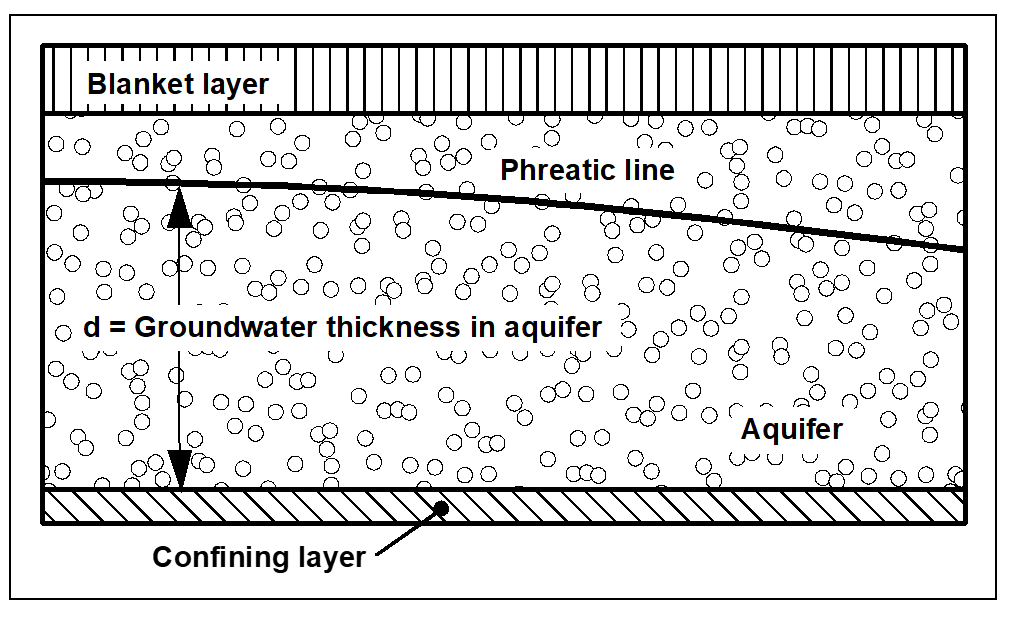GGU-2D-SSFLOW: Horizontal-plane system
The program solves the differential equation:

Where,
Tx, Ty = Transmissibility in e.g. m²/s for x and y direction
h = Piezometric head in e.g. m AD
kv = Permeability of blanket layer in e.g. m/s
d = Thickness of blanket layer in e.g. m
Q = Discharge in e.g. m³/s
x, y = Coordinates e.g. x and y in m AD
H = Water level above blanket layer in e.g. m AD
The transmissibilities result from the product of the coefficient of permeability, kx or ky, and the groundwater thickness in the aquifer d, in e.g. m. In the case of a confined aquifer, the value d is known in advance. In the case of a non-confined aquifer, the transmissibilities are not immediately known as, depending upon the position of the groundwater table, different levels will occur at different positions (see Figure 3). In this case an iteration is necessary to analyse each system, in order to determine the position of the phreatic line. This iteration process is carried out by the program automatically.

Figure 3 Groundwater thickness in aquifer
For the iterative determination of the groundwater thickness in the aquifer, the program first uses an estimation of the phreatic line. In the current program version this is taken as the top of the aquifer. With the resulting transmissibilities the program calculates, in the first iteration step, the piezometric head at all nodes. From these piezometric heads, the transmissibilities for the second iteration step are calculated. The process is carried on until the transmissibilities between iteration step (i) and (i - 1) fall below a user-defined deviation.
Note on "leaky aquifer":
The term leaky aquifer can be taken to mean semi-permeable aquifer. This means that water ingress into a lower groundwater system occurs through the blanket layer. The amount of water entering from above depends upon
the water level difference between the water level above the blanket layer H and the water level in the aquifer h,
the permeability of the blanket layer kv,
the thickness of the blanket layer dv.
In the differential equation used for analysis (see above), this influence is taken into account in the term
kv /dv· (H - h).
This expression only creates an additional amount of water, any three-dimensional flow process cannot be modelled with this simple term. Investigations have shown that for permeability differences of
k / kv > 10.0,
between the aquifer k and the blanket layer kv reliable results can be achieved. The GGU-2D-SSFLOW program reliably calculates even small values numerically, without questioning the physical sense of such input.
Note on boundary conditions:
The case of an impermeable boundary is automatically considered in the finite-element-method. Valid is, that all system boundaries or partial boundaries which have no water level or source boundary conditions, are automatically impermeable.
